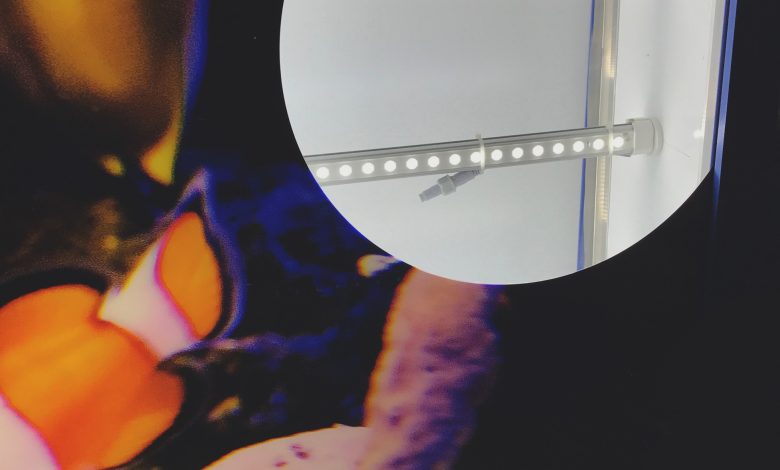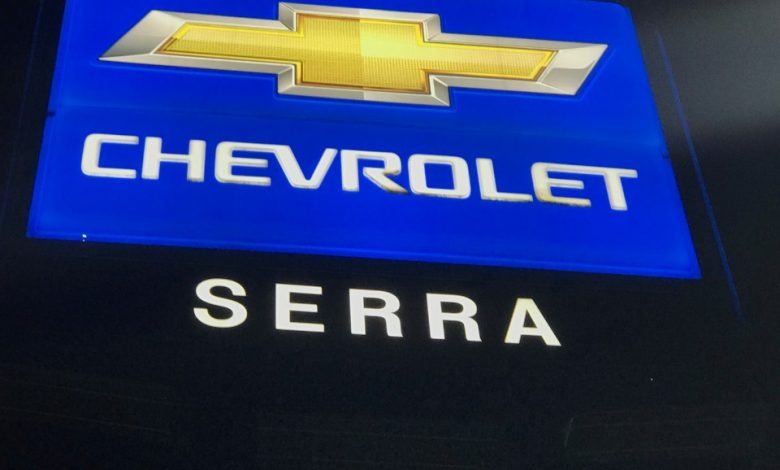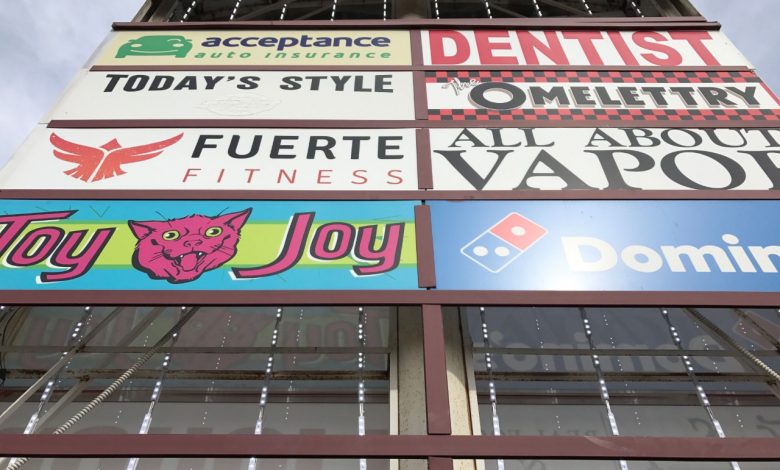Light Change, Right Change
Learn how to approach an LED retrofit project for fluorescent bulbs.
Click, click, buzzzzzzz. Listen closely and you’ll find that could be the sound of a fluorescent tube light powering on. There’s so much effort in the background-as all elements work together within the tube-ultimately creating illumination. Sometimes a slight flicker may occur, and through time perhaps a dark mark appears at one end of the tube. These characteristics are common to this type of lighting, and in many cases problematic as part of a sign project.
In signage that employs this type of lighting, such as sign cabinets, other solutions exist to help improve the brightness and overall efficiency of the sign. The answer is the LED, and it continues to play a major role in not only new sign projects but retrofit jobs that replace tube lights with high-performance diodes.
“Five years ago, pre-fabricated LED Bars offered by LED manufacturers that use the existing lamp sockets or raceway for mounting were still very expensive,” recalls Michael Kerber, Director of LED Development at Grimco. “But as costs for these LED bars have become more affordable, the market has shifted more to this style of system for retrofitting.”
Lower cost is just one piece of the puzzle that helps sign makers position LEDs as a viable retrofit solution. Especially while consulting with the customer, sign shops should highlight the benefits of durability, reliability, and savings in energy with LEDs.
What’s on the Market
Understanding how to implement a retrofit job is knowing which LEDs to use. Manufacturers provide “kits” that can vary depending on the project.
“There are a number of retrofit kits available, from roll-out lattice solutions to bars that mount to the sign structure,” says Bryan Vincent, Principal LED. “We patented and developed the direct-in-socket ‘Stik’ line of products. Our Stik solutions have become the gold standard for retrofitting sign cabinets from T-12 lamps to LED.”
Of course, not all sign shops follow the same protocol. Some have product preferences, others specific methods. And with that comes different ways to approach a retrofit.
“The experience and organizational structure among sign service providers vary vastly. Because of that, many of them have different preferences for how they go about doing lamp replacements,” explains Kerber. “One way is for sign companies to use their own labor to apply high-quality channel letter modules, like the Phoenix PF-3120 offered by HanleyLED, to an ACM baffle that is UL-Recognized for use in electric signs, such as MAX-METAL, or to one of their in-house aluminum extrusions. They will then mount these into the sign cabinet by riveting it into existing structure in the sign.”
As Kerber mentions, HanleyLED is exclusively provided by Grimco. Among the most popular retrofit options are Concorde Bar and the WS-6600 Doublesided Wingspan Module.
Concorde Bar “mounts directly into fluorescent lamp sockets or can be mounted directly to the raceway with their ‘Speed Spring’ brackets,” Kerber states. “The brackets zip quickly into the raceway, and the Concorde Bar mounts to the Speed Spring bracket like an HO socket.”
Another product on the market is Principal LED’s Stik (mentioned earlier) that “is 100 percent aluminum extrusion and our Tap Out modules are housed in an IP67 over-molded housing, taking the amount of breakage on a truck or in the field to zero,” says Vincent.
Available in both 500 or 700 lumens per foot, AgiLight’s RetroRayz LED Light Bar is one more option that is “designed to fit into standard sockets or brackets sold separately for new build signage,” says Dan Miller, Prinicpal LED. In general, he says customers can expect the life of their LEDs to last roughly 50,000 hours with “way less required maintenance and labor over the lifetime.”
Benefit Assessment
Reduced maintenance has long been a primary benefit of LEDs. Sign customers have enough to worry about without having to replace bulb after bulb in their illuminated displays.
“One of the major benefits to the end user,” says Vincent, “is that they are not paying an annual or bi-annual re-lamp. These represent real savings to the end user and PLED’s online ROI calculator has a field to insert annual maintenance costs to determine the annual savings.”
The online calculator considers the LED product, sign size and lighting costs versus fluorescent labor, maintenance, energy costs and operating time. It is a useful tool for any shop describing the savings to a customer during a retrofit job.
“These days, most of the market is aware that LED lights offer a tremendous amount of savings over T8 or T12 fluorescent lamps,” Kerber says. “It is also said that LEDs are more reliable than lamps. But since the pricing of LED lights are often much higher than that of lamps, you want to make sure that you are working with quality products.”
With cheaper products comes the necessity to replace them more often, and if that’s the case, there really are no cost savings to the customer in the long run.
“So, making sure that you are using a reputable brand from a reputable distributor will help you keep your promise of quality and reliability to your customers,” Kerber says.
Justifying the replacement of bulbs with LEDs doesn’t always have to center upon a fixed product cost. There are other variables at stake that make LEDs the right choice.
“ROIs can vary based upon local energy costs but are typically less than 24 months on a double-sided sign cabinet and are as low as 12 months for a single-sided cabinet,” explains Vincent. “This includes a material mark-up and standard labor rates billed by the sign company. Typical energy savings are between 55 and 65 percent versus a T12.”
Another factor that can play a part in a retrofit decision is the weather. Severe conditions can negatively impact the performance of fluorescent bulbs.
“Performance of an LED is virtually the same at 15 degrees Fahrenheit and 90 degrees Fahrenheit, whereas fluorescent lamps dim significantly at extreme temperatures,” says Miller.
Kerber agrees, saying, “fluorescent lamps are impacted more heavily by the impacts of extreme weather.” He adds, “Most commonly, cold temperatures. In cold temperatures, fluorescent lamps take longer to warm up, and they often don’t perform at their peak brightness.”
Since illuminated signs are expected to look their best at night and dawn comes quickly during the cold winter months, Kerber concludes that, “LED lights can help make sure that a business’s sign performs greatly during the cold months of the year when your sign’s illumination is needed the most.”
Achieving Success
The success of a retrofit project hinges on a few outcomes. Kerber says:
1. Does the lighting look even, with zero shadows or hot spots?
2. Does the sign look nice and bright when lit?
3. Was the install fast and smooth?
Not having extensive knowledge about lighting sources or sign construction, customers will look to shops for advice and expertise. This is when sign makers can explain why a retrofit is a viable solution.
Principal LED holds to its mission to “simplify the lives of our customers.”
“Therefore, we tried to create a product that is versatile and simple to use and installs just like a T-12 lamp,” says Vincent. “Since our product is a simple one for one changeout of a T-12, the process is basically just like a re-lamp. The only difference is that the T-12 ballast is removed, and the sockets become only mechanical holders. The 12V power supply is simply wired to each product, just like any other LED system. In fact, all of our Stik products have three- or six-foot wire whips to tie back to the power source.”
Manufacturers are constantly improving products and making them easier for shops to include in their projects. Retrofit jobs are no exception.
“With so many LED offerings on the market, it’s hard for a sign company to know all of the factors to accurately populate each sign they retrofit,” Kerber says. “Therefore, many sign companies rely on their LED provider to provide LED Population Drawings or LED Layouts.”
Grimco supports a resource at HanleyLEDSolutions.com that offers a do-it-yourself layout tool, populating LED drawings in an instant.
“Knowing the factors above will help you know how and where to make the right adjustments to the populations you receive from your LED provider,” Kerber continues. “The great thing about the LED Layouts that HanleyLED provides is that it also provides other crucial data that helps customers estimate their costs for materials other than just the LEDs (such as the amount of acrylic, trim and more).”
Principal LED also offers an online estimator that will “recommend the ideal product given the depth and dimensions of the sign,” says Vincent. “We also have a U.S.-based estimating team that is available to assist. One advantage to manufacturing in the USA is that we can offer a very wide range of LED modules on a Stik, without having to wait for weeks or even months.”
The actual installation of the sign is critical to the project’s success. Specific to the lighting, the replacement process should be fairly straightforward.
“Be sure to disconnect all old electrical ballasts because they will not be used and likely be replaced with LED drivers,” says Miller, though he warns, “Removing old ballasts can be difficult depending on the age and how well-kept the signs are.”
Today, LED products are being made to specifically fit in a retrofit job.
“LED bars that mount into the existing fluorescent lamp sockets are becoming more and more popular,” says Kerber; however, other methods include, “using brackets to mount your LED bars to the raceway or other pre-existing structure inside the sign. And lastly, mounting LEDs to a UL-recognized ACM baffle, then mounting that baffle with brackets to the structure inside your sign.”
Once complete, a sign maker can tout the finished retrofit sign as a dependable and valuable asset. And with LED lighting replacing fluorescent tubes, the only “buzz” associated with the sign will come from those who see it.



